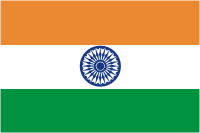 Sarof is a quiet and sincere boy, and decided to focus some of his photography on the plight of the impoverished in India. This is surely a facet of this experience which can not be ignored and I commend Sarof for wanting to look it so squarely in the face. Actually, quite a few Indians have brought up the subject of poverty with me – I think perhaps that they expect me to be surprised or openly moved by the sight of abject poverty. It’s not that I am unmoved, but I think they are surprised to hear that there are homeless people and conditions of impoverishment in the US as well.
Sarof is a quiet and sincere boy, and decided to focus some of his photography on the plight of the impoverished in India. This is surely a facet of this experience which can not be ignored and I commend Sarof for wanting to look it so squarely in the face. Actually, quite a few Indians have brought up the subject of poverty with me – I think perhaps that they expect me to be surprised or openly moved by the sight of abject poverty. It’s not that I am unmoved, but I think they are surprised to hear that there are homeless people and conditions of impoverishment in the US as well.
India has the world’s largest population of poor people, with nearly half of the 1.2 billion people subsisting on under $2. per day. The United Nations’ Human Development Report lists India at or near the top of all the world’s countries in child undernourishment and infant mortality rates. Yet this is the same India with the world’s richest person (move over Bill Gates), an insane level of economic growth (about 10 to 12% per year compared to about 2% in the US), and a burgeoning middle class. Disparity is an understatement.
A trip in a rickshaw is not complete without being approached at stoplights or in traffic by beggars, many of which are simply difficult to look at. Some are missing limbs, holding infants, wearing ragged clothes, or even in makeshift wheelchairs. I have seen pregnant women, elderly, children, and the sick on street corners. It can be really difficult sometimes. Shalem (pronounced sha-LEEM) is a 10th grade boy at KVT who lives down the street from us often drops by to talk or play with the boys. His family has invited us over for dinner and we have spent a few nice evenings with them.
Shalem (pronounced sha-LEEM) is a 10th grade boy at KVT who lives down the street from us often drops by to talk or play with the boys. His family has invited us over for dinner and we have spent a few nice evenings with them.All of the photos in this set were taken by the two of them.



2 comments:
Pat - you brought up very good points. Just to add or comment on your blog here…
**************************************************************************************************************Something to consider when comparing U.S. poverty rates / economic growth to other countries is that, unlike most other industrialized nations, the U.S. measures poverty by income and not by consumption. And while that's fine for determining who needs and receives public assistance, not providing a parallel measurement of consumption greatly overstates how many people are failing to receive adequate resources to meet their basic needs.
So a family of 4 earning $10,000 in annual household income and receiving $25,000 annually in public assistance has access to $35,000 worth of resources. Meanwhile, a 4-person household right next door with $35,000 of earned income and receiving no public assistance has access to the exact same level of resources. Yet the former are considered impoverished while the latter are not, even though the only practical difference is whether their consumption of resources is facilitated by public or private means.
In theory, a country could enjoy a high average growth rate without any benefit to its poorest households if income disparities grew significantly—in other words, if the rich got richer while the incomes of the poor stagnated or declined. This outcome is rare, however; income distribution tends to be stable over time within countries.
Moreover, to the extent that income distribution changes, its relationship to economic growth varies from country to country. This suggests that the magnitude of the poverty reduction payoff from growth depends, in part, on a country's specific circumstances, policies, and priorities.
I do not believe that India is targeting eliminating poverty by compromising some of these priorities and economic growth. Given USA’s 200+ years of Independence vs. India’s 60 years, some priorities take precedence over the other, I think.
During your trips here and there in India, you may have noticed that there are number of strong historical evidences that prove India riches, culture and values. Probably, that was one of the reasons number of invasions took place between 1100 AD and 1947 AD and robbed the riches once India proud of - TVK Murthy
hi sir.....
merry christmas!!!!!
-purnima
kvt
8th D
Post a Comment